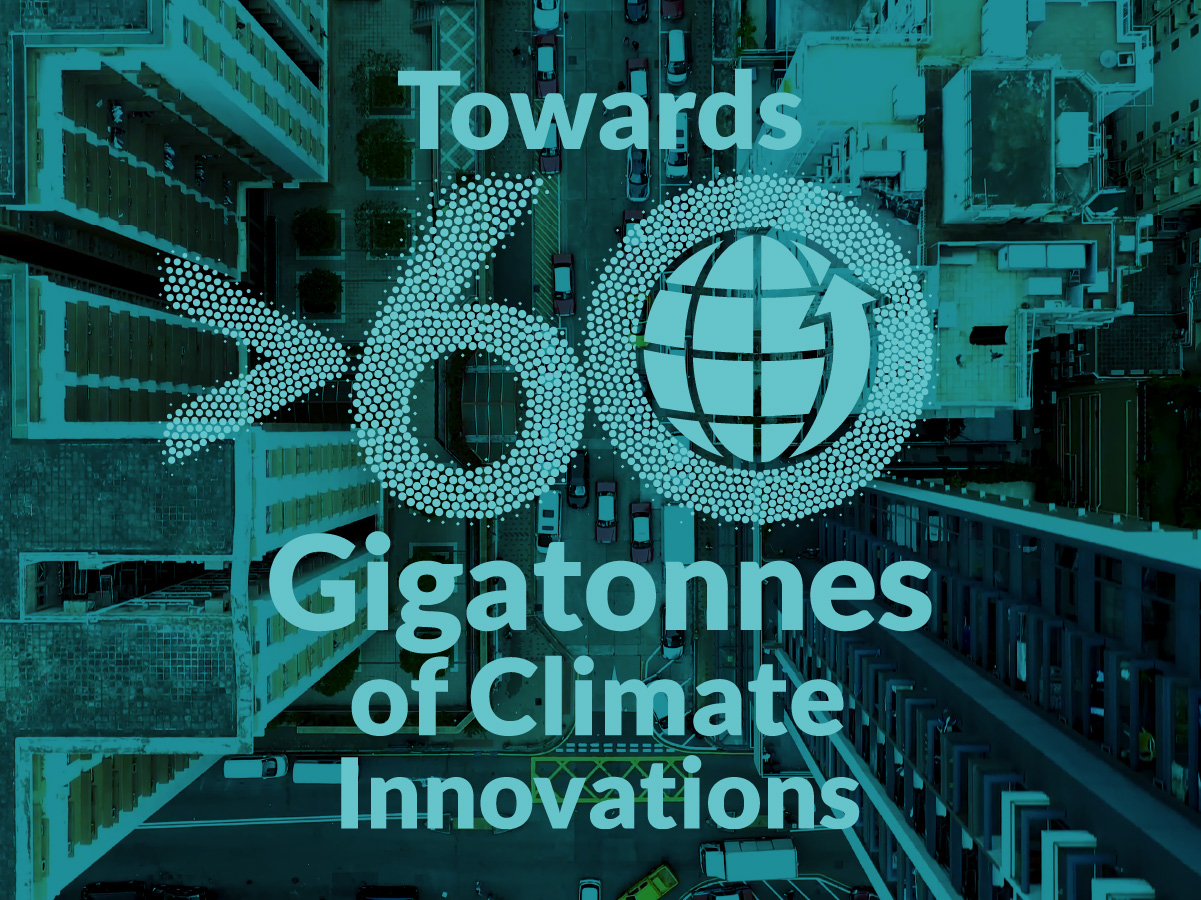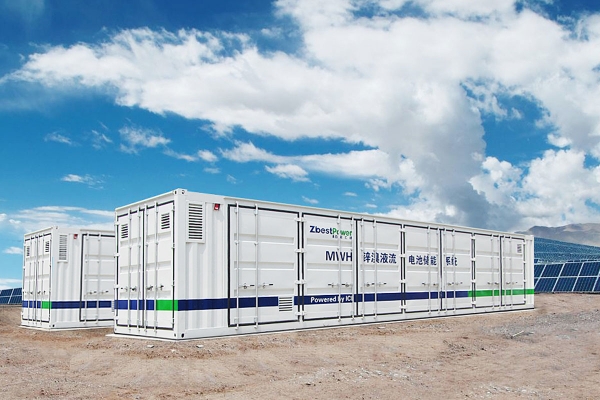Nominated innovations
1000 innovative clean energy solutions and > 150 framework enablers with the potential to deliver more than twelve gigatonnes of avoided emissions by 2030
These assessments are based on a basic avoided emission assessment. The overall concept of avoided emissions is that a solution (product or service) enables the same function to be performed with significantly less GHG emissions. The method of measuring avoided emissions, is to compare a baseline scenario without the enabling solution, with a scenario using the enabling solution; whereby the baseline represents the ‘business as usual’ (BAU) scenario.
These assessments are based on the framework document: The Avoided Emissions Framework (AEF) from September 2020

Pollution free power for lighting and cooking
Pesitho wrote: More than 600 million people in africa live off-grid, and the poorest people are paying among the world’s highest prices for energy services. Pesitho will be working on a micro-off grid solution using pv and batteries to enable them to cook in a more environmentally friendly way... Source: EIT Climate KIC's ClimateLaunchPad
Denmark

Pesitho
Pollution free power for lighting and cooking
Pesitho wrote: More than 600 million people in africa live off-grid, and the poorest people are paying among the world’s highest prices for energy services. Pesitho will be working on a micro-off grid solution using pv and batteries to enable them to cook in a more environmentally friendly way... Source: EIT Climate KIC's ClimateLaunchPad
Currently unavailable

Popa Boat
Popa Boat wrote: Sustainable sharing solution of popa boat in the urban waters. It can run on solar energy during the cloudy days with the help of battery storage on the dock. You can order it and control - by using mobile phone... Source: EIT Climate KIC's ClimateLaunchPad
Lithuania

Popa Boat
Popa Boat
Popa Boat wrote: Sustainable sharing solution of popa boat in the urban waters. It can run on solar energy during the cloudy days with the help of battery storage on the dock. You can order it and control - by using mobile phone... Source: EIT Climate KIC's ClimateLaunchPad
Currently unavailable

Portable biomass densification technology
Takachar developed technology at the Massachusetts Institute of Technology (MIT) and licensed it in order to develop small-scale, low-cost, portable biomass treatment systems that can be attached to the back of tractors, trailers, or even donkey carts. The innovation can be deployed on farms in remote areas to take small pockets of biomass residues and process them onsite into a chemically densified form that is moisture-resistant and volumetrically dense. This can reduce the logistical, collection, and disposal cost by about 75% compared to current alternatives such as baling and pelleting. The innovation therefore provides farmers with a cost-effective way to clear their land of crop residues after harvest.
India

Takachar
Portable biomass densification technology
Takachar developed technology at the Massachusetts Institute of Technology (MIT) and licensed it in order to develop small-scale, low-cost, portable biomass treatment systems that can be attached to the back of tractors, trailers, or even donkey carts. The innovation can be deployed on farms in remote areas to take small pockets of biomass residues and process them onsite into a chemically densified form that is moisture-resistant and volumetrically dense. This can reduce the logistical, collection, and disposal cost by about 75% compared to current alternatives such as baling and pelleting. The innovation therefore provides farmers with a cost-effective way to clear their land of crop residues after harvest.
Currently unavailable

Portable smart electric cycle
Providing sustainable urban mobillity with a foldable,electric bicycle that has a low fuel consumption.
India

ELON MOTORS ENGINEERING Pvt Ltd
Portable smart electric cycle
Providing sustainable urban mobillity with a foldable,electric bicycle that has a low fuel consumption.
Currently unavailable

Portable solar-electrical hybrid food oven
Solar-electricity hybrid cookling appliances. Has a foldable solar reflector.
India

Sushant Pandey (Individual)
Portable solar-electrical hybrid food oven
Solar-electricity hybrid cookling appliances. Has a foldable solar reflector.
Currently unavailable

Portable solution for temporary lighting
Prime Design Sweden has developed the Baselight, which is a portable light system to be used in situations where temporary light is required, such as construction sites, rescue operations or events. It can be easily moved around while maintaining performance and energy consumption that is competitive to permanent lighting solutions. Baselight is also equipped with different lighting settings to increase usability and flexibility.
Sweden

Prime Design Sweden AB
Portable solution for temporary lighting
Prime Design Sweden has developed the Baselight, which is a portable light system to be used in situations where temporary light is required, such as construction sites, rescue operations or events. It can be easily moved around while maintaining performance and energy consumption that is competitive to permanent lighting solutions. Baselight is also equipped with different lighting settings to increase usability and flexibility.
Currently unavailable

Power and bio-fertilizer from paddy straw residue
Avoidance of in-field burning of agricultural biomass residue by using large scale biogas production from paddy straw to generate 1.0 MW power. Can also be used for production of bio-fertilizer.
India

Indian Institute of Technology Delhi, Hauz Khas, New Delhi - 110016, India
Power and bio-fertilizer from paddy straw residue
Avoidance of in-field burning of agricultural biomass residue by using large scale biogas production from paddy straw to generate 1.0 MW power. Can also be used for production of bio-fertilizer.
Currently unavailable

Power balancing energy solution
Enequi has developed a ‘power balancing’ solution, which helps users make as much as possible of their energy. The solution includes a scalable battery which is automatically charged using power from the grid when the electricity cost is low, then to be used whenever needed. In order to integrate with solar and other renewable energy sources, the system is also able to store energy from granular production solutions. Furthermore, the power balancing also adapts the energy consumption in demanding processes to avoid overloading the system, thus enabling reduction of repair and maintenance.
Sweden

Enequi AB
Power balancing energy solution
Enequi has developed a ‘power balancing’ solution, which helps users make as much as possible of their energy. The solution includes a scalable battery which is automatically charged using power from the grid when the electricity cost is low, then to be used whenever needed. In order to integrate with solar and other renewable energy sources, the system is also able to store energy from granular production solutions. Furthermore, the power balancing also adapts the energy consumption in demanding processes to avoid overloading the system, thus enabling reduction of repair and maintenance.
Currently unavailable

Power bank ZNBR flow battery for grid storage
Zbest Power Co. Ltd, has developed an innovative solution to renewable energy storage which they have called ‘Power Bank’. The company has developed a zinc-bromine flow battery, an emerging technology that provides a viable energy storage option for the fast-growing renewable energy market. Part of the solution also includes capability for developing key components and materials for the zinc-bromine flow battery including bipolar electrodes, membranes, electrolytes and flow frames, which could reduce the cost of the battery to half current levels.
China
≈10

Beijing ZBEST Technology Co., Ltd
Power bank ZNBR flow battery for grid storage
Zbest Power Co. Ltd, has developed an innovative solution to renewable energy storage which they have called ‘Power Bank’. The company has developed a zinc-bromine flow battery, an emerging technology that provides a viable energy storage option for the fast-growing renewable energy market. Part of the solution also includes capability for developing key components and materials for the zinc-bromine flow battery including bipolar electrodes, membranes, electrolytes and flow frames, which could reduce the cost of the battery to half current levels.
≈10Mt CO2e/year

Power quality improvement in electrical networks
Comsys has developed the ADF (Active Dynamic filter) to reduce problems caused by a veriety of electrical disturbances that weakens power quality. The ADF is a low-harmonic solution that uses harmonic compensation and mitigation resonance for power quality improvement in an electrical network. The solution is modular and adaptable, meaning that it can be applicable to different types of industries. The solution can also replace existing transformers in a network. The solution can help generating energy savings, higher productivity and reduce the number of failure in a network.
Sweden
≈1

Comsys AB
Power quality improvement in electrical networks
Comsys has developed the ADF (Active Dynamic filter) to reduce problems caused by a veriety of electrical disturbances that weakens power quality. The ADF is a low-harmonic solution that uses harmonic compensation and mitigation resonance for power quality improvement in an electrical network. The solution is modular and adaptable, meaning that it can be applicable to different types of industries. The solution can also replace existing transformers in a network. The solution can help generating energy savings, higher productivity and reduce the number of failure in a network.
≈1Mt CO2e/year